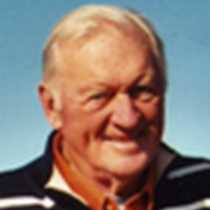Astoria, Oregon
Our nation’s western fringe seemed like another world to the Corps of Discovery. They had sailed, pushed, walked and rode horses toward the “bad tasting lake” for two years. After a brief wind-blown siege at “Station Camp” on the Columbia River’s northern shore (Chinook country) they paddled back upriver, crossed over, and settled at Fort Clatsop on the south shore.
Similar to the Corps’ anxious, rainy days of 1805-1806, guests ignored precipitation and dripping cedar boughs to explore the third version of Fort Clatsop. Fort Clatsop rangers outlined the Lewis & Clark party’s experiences, described the Fort, and directed several guests down a nearby slope to the canoe landing on the Lewis & Clark (formerly Netul) River.
Upon returning from Fort Clatsop, motor coaches parked at the doors of one of the country’s premier sea-and-river shows – the Columbia River Maritime Museum. Because of challenging and dangerous waters at the Columbia River mouth (the shifting silt-and-sand bar) the museum’s themes focus on the river’s history, the endangered salmon runs, great sailing ships and small fishing boats, and the important role played by the U.S. Coast Guard.
The town of Astoria was founded in 1811 by John Jacob Astor’s two parties – one by land; the other by sea – as a fur trade outpost on the shores of the Western Sea (Pacific Ocean). Guests found this tidy town just right for Danish doughnuts, boutiques filled with old and new items, a laid-back bistro or two, bookstores, products from the local chocolate factory, and a riverside spirit immersed in history – the oldest American town west of the Rocky Mountains.
Lewis & Clark remained on the menu during the afternoon. A motor coach took guests and staff over the 4.1-mile-long Astoria-Megler Bridge to Washington State. A particular effort was made to follow the 1805 path of William Clark northward to the heights of Cape Disappointment. Also seen were glimpses of the vast ocean, sections of the “Discovery Trail” laid out for the Lewis & Clark bicentennial in 2004-2006, a deep patch of temperate rain forest, and the charming, colorful port of Ilwaco, Washington. After visiting the L&C Interpretive Center – a Washington State site – guests put their hands in waters of the Pacific Ocean and studied architect Maya Lin’s concrete steps and Indian spiritual circle at nearby Waikiki Beach.




